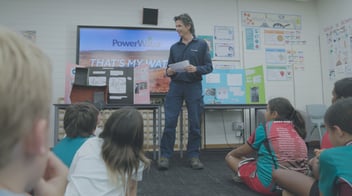Future-proofing the Top End's water supply
Despite its reputation for monsoons and flooding rains, a few disappointing wet seasons could see water levels in the Top End's catchments falling to unsustainable lows. With population growth and more development sure to increase the demand for water, what is being done to secure Darwin’s supply?
The most recent wet season in the Northern Territory (NT), which runs runs from October to April, was the driest in 27 years and the hottest on record. This saw Darwin River Dam, responsible for supplying about 85% of Darwin’s water, record its lowest ever rainfall: just 905 mm of rain was reported compared to an average of 1541 mm.
But even if a lot of rain falls during the wet season, it doesn’t guarantee a strong supply, said Liam Early, Water Services Project Manager at NT utility Power and Water Corporation.
“While it may rain a lot in the wet season (or not), only a small percentage of water falls in the Darwin River Dam and surrounding catchment areas,” Early said.
“In addition, about two-thirds of the annual water level reduction in Darwin River Dam is due to evaporation.
“We just never know how much rain we are going to get from year to year, and consecutive low rainfall wet seasons can put pressure on our dams as well as groundwater sources.”
This is compounded by the fact that Darwin residents use almost twice as much water as those in other cities with similar climates. Power and Water’s Living Water Smart program aims to address this, with initiatives including free garden irrigation audits, leak checks and a smart water meter trial, but more needs to be done.
“Top Enders love their gardens, using about 60% of their water there,” Early said.
“In recent times, it has been found that Darwin residents use more water than can be captured and supplied in the long term. This means supply augmentation and/or demand management is required to maintain service levels.”
Seeking supply solutions
Released in 2013, Power and Water’s Darwin Region Water Supply Strategy details its plan to balance water supply and demand.
One likely option is returning Manton Dam to service. Built in 1942, the dam has a storage capacity of 14 GL and was Darwin’s primary source of water until the commissioning of Darwin River Dam in 1972.
Since then, Manton has been in care and maintenance mode as a potential future water supply and has become a popular fishing and water skiing spot. Power and Water is currently licenced to extract 7.3 GL of water a year, which it doesn’t do due to infrastructure constraints and water quality challenges.
“In our strategy … we talk about Manton Dam as an additional water supply system in the short term (from 2026-27) as the infrastructure, while old, already exists,” Early said.
“Returning Manton Dam back to service also represents lower capital expenditure compared to constructing a new dam.”
The utility estimates it could cost about $122 million to bring Manton Dam back online. It has just closed the tender process for a feasibility study, which is expected to be complete by the end of the year, and is also conducting a condition assessment of the existing infrastructure, including the dam wall, inlet tower and rising mains.
“We also need to consider the construction of any new infrastructure, which includes treatment and pumping plants, rising mains and incorporating these into the existing supply network,” Early said.
Shooting for AROWS
While Manton Dam could provide a short-term solution, the long-term option Power and Water is pursuing is the Adelaide River Off-stream Water Storage (AROWS) scheme.
This is an off-stream storage in the Marrakai region that could provide storage for 300 GL of water harvested from the Adelaide River during the wet season. This water would then be transferred to the Strauss Water Treatment and Storage Facility for treatment and distribution.
In a study of AROWS as part of its Northern Australia Water Resource Assessment, the CSIRO found the proposal could extract and store more than 50 GL of water per year.
It said pumping 50 GL a year during high flow events in the wet season “would have a negligible impact on the flow habitats of estuarine and coastal species".
Power and Water isn’t the only entity looking at AROWS. Despite the CSIRO report also stating that there was “no land suitable for irrigated agriculture in the vicinity of the AROWS", the ABC recently revealed that a private company, NT Water, had approached the NT Government with a plan to build a 310 GL storage at the site, along with a 10,000-hectare agricultural precinct.
With aquifers in the Darwin rural area at all-time lows, NT Water told ABC Online its plan presented “the opportunity for expansion of the agricultural sector in the Northern Territory on the back of global growth in demand for food, biofuels and bio-chemicals”.
Other options
It’s likely one solution can’t secure the Darwin region’s water supply indefinitely; rather it will take a variety of approaches to ensure those in the Top End have the water they need.
Other options outlined in Power and Water’s water supply strategy include: desalination; a greater focus on water sensitive urban design; finding an evaporation reduction technology that works on a large scale; stormwater reuse; and recycling wastewater.
“Power and Water work closely with other NT Government departments to forecast future demand and the timely requirement for new infrastructure,” Early said.
“Planning for future water resources takes time and capital resources and has to be timed with growth and demand in mind.”


